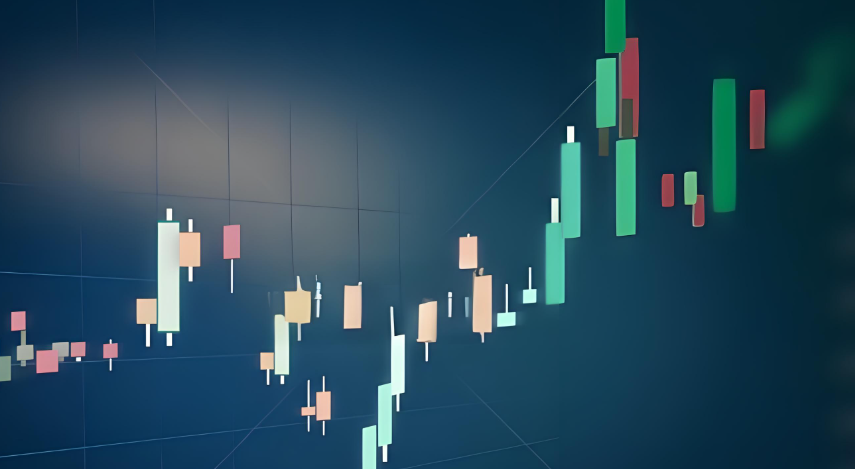In the world of finance and investment, understanding the concept of trading volume is crucial. Trading volume refers to the total number of shares or contracts traded in a specific period. This metric serves as a significant signal of market activity and can greatly assist investors in discerning between meaningful price movements and potential false signals. Essentially, analyzing trading volume isn't about predicting market trends, but rather about understanding the beliefs and commitments behind price changes. Large trading volumes often indicate strong conviction behind price movements, while smaller volumes may suggest uncertainty or a lack of commitment among market participants. This relationship between price and volume allows investors to confirm trends and identify potential reversals in the market.
Investment platforms typically provide automatic calculations and displays of cumulative volume, often represented by vertical bars beneath price charts. A larger bar signifies periods of heightened trading activity, while shorter bars represent quieter trading periods. So, how can investors utilize this important metric in their trading strategies?
Firstly, trading volume is essential for trend confirmation. In an upward market, an increase in volume should accompany rising prices; buyers need to step up their purchasing to continue pushing prices higher. Conversely, if prices rise while trading volume decreases, this may indicate a waning interest among investors, potentially signaling an impending reversal. When trading volume is low, price fluctuations—whether up or down—don’t carry the same weight. However, significant price changes occurring alongside large trading volumes suggest that something fundamental may have changed about the stock.
Next, one should look for exhaustion in trends combined with volume analysis. Often, these manifestations will be characterized by sharp price movements accompanied by marked increases in volume, indicating that a trend might be nearing its end. For instance, at the height of a price rally, participants become anxious about potentially missing out on further gains, which can lead to a surge of sellers. As a result, dwindling buyer numbers may lead to a subsequent decline, causing greater volatility and increased volume.
Trading volume can also be instrumental in identifying bullish signs. For example, if prices decline but trading volume increases, followed by a price rebound that doesn’t breach the previous low, it is frequently interpreted as a bullish indicator. Such scenarios may suggest that sellers are exhausting their influence, paving the way for potential upward price movements.
Another significant connection lies between volume and price reversals; a significant spike in trading volume can often precede considerable price volatility or shifts in market sentiment. When prices fluctuate with high volumes after a prolonged uptrend or downtrend, this could signal a possible reversal in the market direction, thus warranting close observation.
Moreover, analyzing the volume associated with price breakouts is vital. Breakouts occurring at key levels—be it support, resistance, or technical formation—should preferably be accompanied by high trading volumes. Such volumes confirm that many market participants are backing the new price direction. Conversely, low-volume breakouts might serve as false signals, indicating a lack of confidence in the trend's sustainability.

Furthermore, it's important to consider volume history in the context of recent market behavior. Comparing today’s volumes to those from fifty years ago may lead to irrelevant data. More recent datasets are generally more pertinent and indicative of current market dynamics, emphasizing that volume should be viewed relative to its historical environment.
The confluence of volume and liquidity is another critical aspect; traditionally, high volume is considered a robust indicator of liquidity. Stocks or markets displaying the highest volumes often facilitate easier trades in the short term, as numerous buyers and sellers are ready to transact across varying price points.
Moreover, various price-volume relationships yield insights that can alter trading decisions. For instance, a rise in volume coupled with an increase in price signals robust bullish sentiment, demonstrating that more traders are engaging with the price increase, thereby confirming the strength of the trend. On the contrary, if we see an increase in volume while prices decline, it can indicate a strong bearish trend fueled by selling pressure.
When both price and volume are decreasing simultaneously, it often hints at a weakening downtrend; as fewer traders participate, selling pressures may begin to dissipate. However, this should not be mistaken for an immediate reversal, as it merely suggests diminished conviction behind the selling.
It's also vital to recognize when prices rise even as trading volume decreases, which typically implies weakness in the upward trend. This scenario suggests that there may not be enough participants in the market to sustain the increase, heightening the risk of a reversal. Such occurrences frequently transpire at the end of bullish trends or during consolidation periods where price movements occur alongside reduced trading volumes.
To summarize, trading volume presents an efficient tool for studying market trends. It serves multiple purposes, such as assessing market strength and verifying whether trading volumes confirm price movements or suggest possible reversals. Incorporating volume-based indicators into decision-making processes can enhance an investor's ability to identify entry and exit signals, although it’s essential to remember that volume is not an exact science. By analyzing price behavior, trading volume, and the respective indicators, investors can enhance their understanding of market dynamics and make more informed trading decisions. Whether for trend analysis, breakout trading strategies, or understanding market sentiment, trading volume plays a foundational role in the landscape of financial trading.